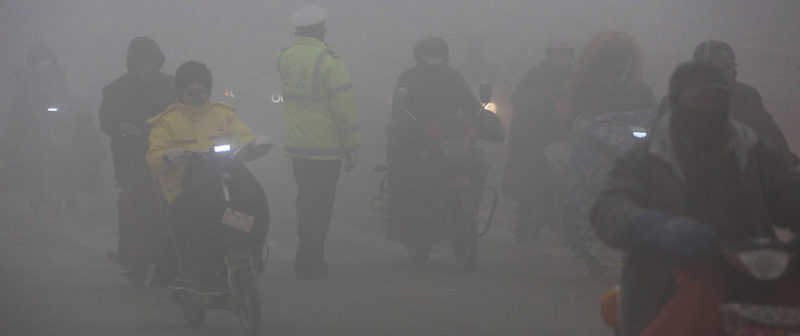Summer can bring more than just sunshine and swimming opportunities. In many urban areas, summer is the time of year when smog is at its worst. Smog is a form of air pollution that’s particularly hazardous on hot days.
Why should you worry about smoggy days? According to the Environmental Protection Agency (EPA), it can be dangerous to breathe in too much smog. Smog contains a pollutant called ozone, and elevated ozone levels can have a variety of negative effects on your lungs.
Smog is most common in big cities, though people living in suburban areas also need to be conscious of its dangers. If you need to pass through a metropolitan area during a family vacation or road trip, it’s also wise to be aware of smog conditions.
No matter where you live, there are precautions you can take to protect yourself and your family on especially hot days, when smog warnings are in effect.
What is smog?
The term “smog” describes a mixture of emissions under specific climate conditions. These emissions include:
- industrial pollutants
- car and other vehicle pollutants
- open burning
- incinerators
In the United States, the first smog usually occurs in the summer. In London, England, smog is more noticeable in the winter.
Summer smog is also known as photochemical smog. This smog is created when sunlight mixes with hydrocarbons and nitrogen oxides, which are chemicals in the atmosphere.
Ozone, a colorless, odorless gas, can be good when in the upper atmosphere but harmful when found near ground level. Ozone formed in the Earth’s lower atmosphere can lead to smog and affect your health when you breathe it.
How can smog affect my health?
Exposure to smog can lead to several different types of short-term health problems due to its ozone content. These include:
- Coughing and throat or chest irritation: High levels of ozone can irritate your respiratory system, generally lasting for a few hours after you’ve been exposed to smog. However, ozone can continue to harm your lungs even after symptoms disappear.
- Worsening of asthma symptoms: If you suffer from asthma, exposure to high levels of ozone from smog can trigger asthma attacks.
- Difficulty breathing and lung damage: Smog can make it feel difficult to breathe deeply, especially during exercise. This is because of the effects of ozone on lung function.
It’s important to note that smog affects everyone differently, and some people are more susceptible to its negative effects. Children, seniors, and people with asthma need to be especially careful on smoggy days.
How can I protect myself from smog?
The EPA notes that the majority of people only need to be concerned about smog when ozone exposure reaches high levels. In order to protect yourself and your family, you need to stay informed about ozone levels in your area. If you are vacationing, check the ozone levels wherever you are traveling.
National, state, and local air agencies have tools available to help you look up ozone levels in a particular region and understand the negative health effects of smog. For example, the EPA has developed an index called the Air Quality Index (AQI) that reports on the levels of ozone and other pollutants nationally. The index has colors assigned to ozone levels to make it easy to understand the air quality in your community.
The AQI ranks air quality from zero to 300. Levels above 150 are considered unhealthy for anyone, and levels above 200 are considered very unhealthy. These exposure levels correspond to red and purple colors on the index, respectively.
These precautions can help protect you when ozone levels are high:
- Limit your outdoor activities if ozone levels are unhealthy, as elevated ozone levels increase your chances of being affected by smog the longer you stay outside.
- Keep your activities gentler on smoggy days, as the more vigorous your activity level, the greater your chances of experiencing respiratory problems.
Take precautions
Don’t take chances with smog on days when air quality is poor. The best approach is to spend less time outdoors and replace vigorous activities, like running or biking, with gentler options, such as walking. You can also schedule your outside activities for the early morning or evening, when ozone levels are low. These simple steps can help protect you and your family on smoggy days, whether you live in a major city or you’re just passing through.


